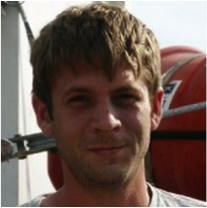Linking Freshwater Flux with Variations In Ocean Salinity

Associate Scientist
Woods Hole Oceanographic Institution
Woods Hole Oceanographic Institution
Dr. Farrar received his Ph.D. in Physical Oceanography from the MIT-WHOI Joint Program in Oceanography. His research interests include air-sea interaction and exchange; dynamics and thermodynamics of the upper ocean; tropical dynamics and equatorial waves; oceanic internal waves and eddies; satellite oceanography; and ocean observing and instrumentation.
Webinar Clip
Many ocean and atmospheric processes combine to affect the saltiness of the ocean, also known as ocean salinity. To better study these processes within the SPURS region of the North Atlantic, scientists have created a salinity "budget". In the finance world, a budget is used to estimate income and expenditures for a set period of time. In the science world, a salinity budget is used to estimate freshwater flux (i.e. how much freshwater is entering and leaving a set system) for a set period of time. Listen as Dr. Farrar explains his research with surface fluxes to learn more about how they work to control ocean salinity in this particular region of the ocean.Full webinar: Ocean Thinking: Balanced Budget? Oh, Buoy!
Click here for a transcript of this clip (PDF, 37.6 KB). |
Resources
Applicable Science Standards
 Asking Questions and Defining Problems. A practice of science is to ask and refine questions that lead to descriptions and explanations of how the natural and designed world(s) works and which can be empirically tested.
Asking Questions and Defining Problems. A practice of science is to ask and refine questions that lead to descriptions and explanations of how the natural and designed world(s) works and which can be empirically tested. Developing and Using Models. A practice of both science and engineering is to use and construct models as helpful tools for representing ideas and explanations. These tools include diagrams, drawings, physical replicas, mathematical representations, analogies, and computer simulations.
Developing and Using Models. A practice of both science and engineering is to use and construct models as helpful tools for representing ideas and explanations. These tools include diagrams, drawings, physical replicas, mathematical representations, analogies, and computer simulations. Using Mathematics and Computational Thinking. In both science and engineering, mathematics and computation are fundamental tools for representing physical variables and their relationships. They are used for a range of tasks such as constructing simulations; solving equations exactly or approximately; and recognizing, expressing, and applying quantitative relationships.
Using Mathematics and Computational Thinking. In both science and engineering, mathematics and computation are fundamental tools for representing physical variables and their relationships. They are used for a range of tasks such as constructing simulations; solving equations exactly or approximately; and recognizing, expressing, and applying quantitative relationships.